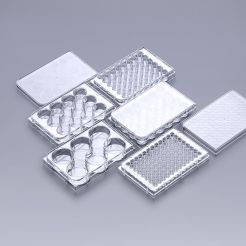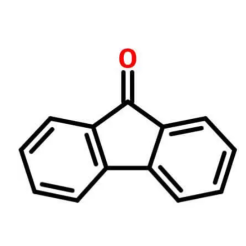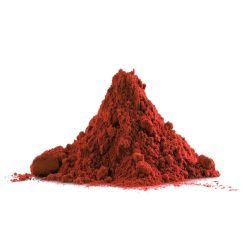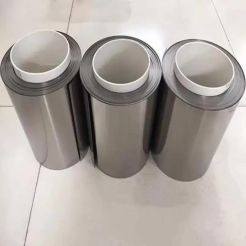Hydroxyethyl methyl cellulose (MHEC)
Hydroxyethyl methyl cellulose (MHEC) is widely used in water-based latex coatings, building construction and building materials, printing inks, oil drilling and other aspects, plays a thickening and water retention role, improve the construcability, used in dry and wet mortar series products.
Product Description
Hydroxyethyl methyl cellulose is mainly used in interior and exterior wall putty powder, tile adhesive, tile jointing agent, dry powder interface agent, interior and exterior wall insulation mortar, self-leveling mortar, repair mortar, decorative mortar, waterproof mortar, etc.
Application areas of MHEC cellulose:
• Mortar and grout: MHEC powder is used in cement-based mortars and grouts to improve their adhesion, workability, and durability.
• Tile adhesives: Hydroxyethyl methyl cellulose HEMC is added to tile adhesives to increase their bonding strength, water resistance, and flexibility.
• Exterior insulation and finishing systems (EIFS): HEMC powder is used in EIFS to improve the system's flexibility, adhesion, and resistance to cracking.
• Self-leveling compounds: MHEC powder is added to self-leveling compounds to enhance their workability and durability.
• Gypsum-based products: Methyl hydroxyethyl cellulose MHEC is used in gypsum-based products to improve their water resistance, adhesion, and strength.
MHEC powder properties
1. High thickening efficiency and wide range of viscosity grades, to get any desired thickening efficiency.
2. Good compatibility with most inorganic salts and a wide range of gum and resin.
3. Anti-biodegradable MHEC powder products have excellent stability, to ensure a nice shelf life for paint.
4. Good protective colloid activity, to prevent coagulation of solid particles in the coating.
5. Less insoluble matter, clear and transparent aqueous solution.
6. Small viscosity fluctuation.
7. High purity, low moisture content, low ash content.
Anti- biodegradation performance
The use of an excellent MHEC thickener with anti-biodegradable properties minimizes viscosity loss.
The solution properties l
MHEC chemical hydration time counts from the initial wetting to a moment when the solution starts to become viscous. Hydration time could be varied to meet a special requirement. MHEC hydration time, apparently affected by the pH value.Typically ranges from 4 to 25 minutes.
The solution properties ll
In the actual conditions of industrial applications, shear rate is an important factor to consider when the amount of Hydroxyethyl methyl cellulose MHEC required to achieve a certain viscosity. Generallyspeaking, the higher the shear rate, the lower the viscosity.
The solution properties lll
The most important property of Hydroxyethyl methyl cellulose powder is that it acts as a thickener, in creasing the viscosity of the liquid,and its thickening depends on its concentration (shown below). In addition, the effect of different viscosity grade on the thickening property can alsobe clearly seen, under the other constant parameters, the viscosity of HEMC cellulose increases with the increase of viscosity grade.
MHEC powder uses
1. The synthesis of latex and the formulation of water-based coatings
In the components of emulsion coatings, MHEC (Hydroxyethyl methyl cellulose) from Haoshuo serves several important functions. It prevents the gelation of pigments, aids in pigment dispersion, stabilizes the latex, and can increase the viscosity of the components. MHEC powder exhibits good compatibility with other materials in the formulation, such as pigments, additives, fillers, and salts. Coatings thickened with Hydroxyethyl methyl cellulose exhibit good rheological properties at various shear rates and possess pseudoplasticity. They can be applied using various methods such as brushing, rolling, or spraying. These coatings are easy to work with, as they are less prone to dripping, running, splattering, and have good leveling properties.
2. Oil drilling
In the context of oil drilling and extraction, high-viscosity MHEC powder is primarily used as a thickening agent in drilling and completion fluids. Low-viscosity MHEC is used as a fluid loss reducer. MHEC powder serves as a thickening agent in various drilling, completion, cementing, and fracturing fluids, ensuring that mud has good flowability and stability. In drilling, it can enhance the mud's ability to carry rock cuttings and prolong the life of the drilling bit. In low-solids drilling and completion fluids, MHEC's excellent water loss control properties help prevent significant water infiltration into the wellbore, improving wellbore stability.
3. Construction
Hydroxyethyl methyl cellulose MHEC can be used in construction products such as concrete mixes, freshly mixed mortar, gypsum plaster, or other mortars to provide water retention during their construction process before setting and hardening. In addition to improving the water retention properties of construction products, MHEC thickener can also extend the workability and open time of plaster or mortar. It helps reduce issues like skinning, slumping, and sagging.
4. Cosmetics and Detergents
HEMC (Hydroxyethyl methyl cellulose) is an effective binder, thickener, stabilizer, and dispersant used in various hair care products such as shampoos, hair sprays, conditioners, and cosmetics. In these products, it helps improve the texture, consistency, and stability of formulations.
In addition, water soluble MHEC CAS9032-42-2 is also utilized as an anti-redeposition agent in detergent powders. This means it helps prevent dirt and soil particles from reattaching to fabrics during the washing process, thus aiding in the overall cleaning efficiency of laundry detergents.
5. Macromolecule polymerization
MHEC (Hydroxyethyl methyl cellulose) serves as a dispersing, emulsifying, suspending, and stabilizing agent in the polymerization or copolymerization components of synthetic resins. It can be used to protect colloids in these processes. Its key characteristics include strong dispersion capabilities, resulting in products with thin "skins" on particles, fine particle size, uniform particle shape, a loose structure, good flowability, high transparency, and ease of processing.
6. Other
Cellulose thickener MHEC is used in pesticide emulsion and suspension formulations as a thickening agent for spray emulsions or suspensions. MHEC powder is also employed in various other applications, including cleaning agents, polishing compounds, electroplating inks, insecticides, fire-resistant pencil materials, ceramics, cushion padding, tobacco products, welding fluxes, and cable filling compounds, where it serves as a water-resistant powder to prevent moisture infiltration into cables.
Considering to buy hydroxyethylcellulose from reliable manufacturer?
For the preparation of aqueous solutions containing MHEC, the following recommended procedure should be followed:
1. Begin by agitating water thoroughly to ensure uniformity in the solution. Gradually introduce MHEC into the agitated water to prevent the formation of lumps.
2. Continue adding MHEC powder until it is completely incorporated into the water, making sure to complete this step before any notable increase in solution viscosity occurs.
3. Maintain continuous agitation until all the added MHEC powder is fully dissolved. To facilitate the dissolution of Hydroxyethyl methyl cellulose MHEC, consider employing one of the following methods:
a. Wet Hydroxyethyl methyl cellulose MHEC with a water-compatible alcohol before introducing it into the water.
b. Blend MHEC with another powdered substance that is either immiscible with water or exhibits low solubility in water.











